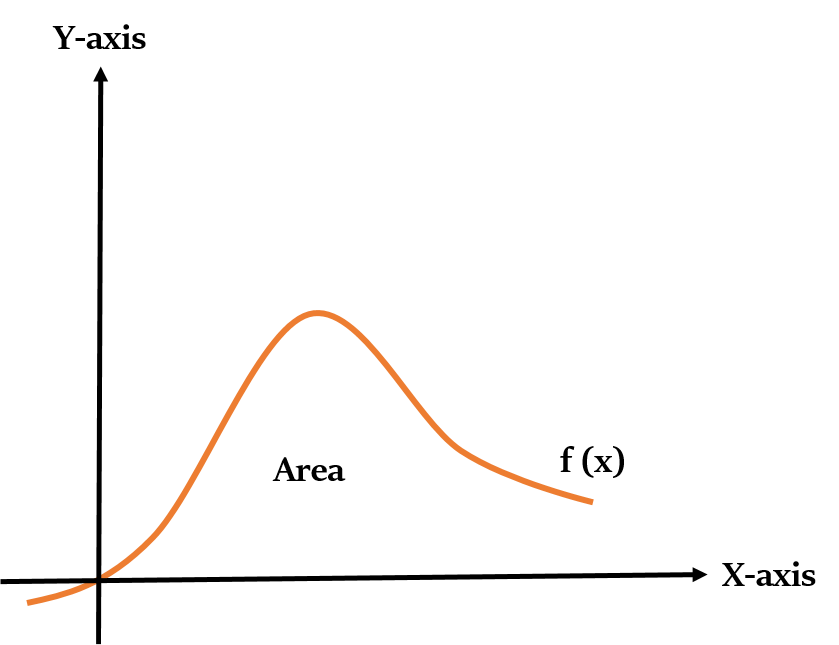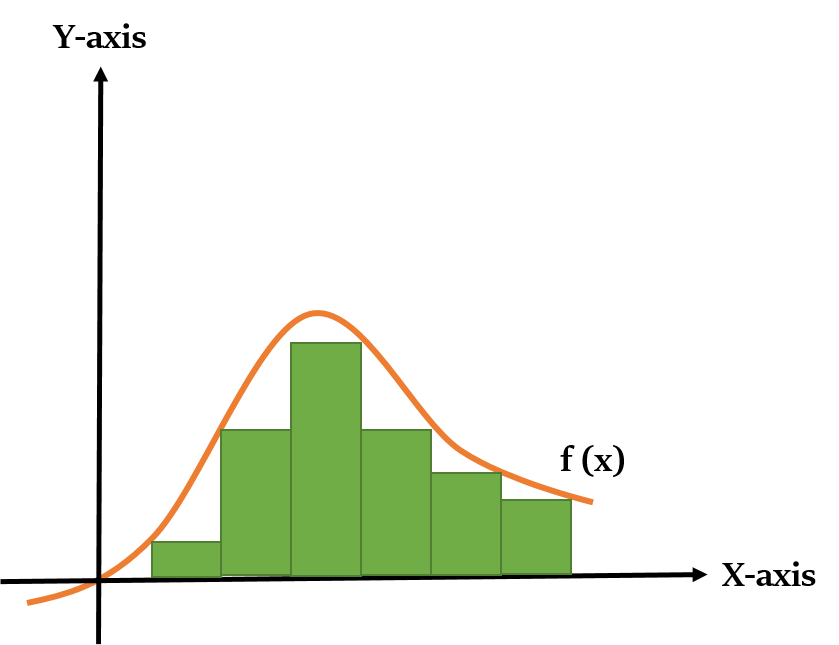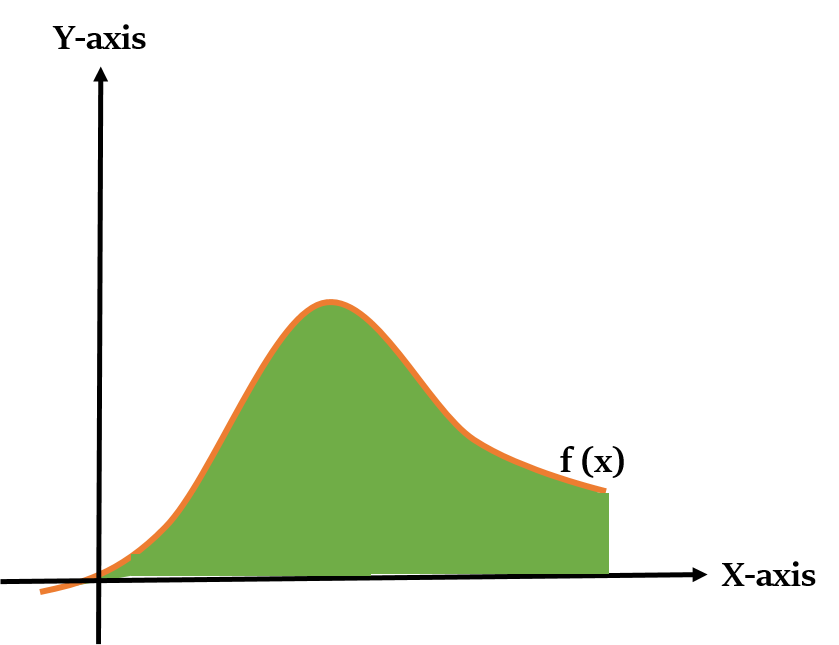Basics of Integral Calculus
What is Integral Calculus?
Integration is a process via which we add up small parts (generally called slices) to find the value of the whole.
The whole may be an area, volume, etc. But generally, we will be finding the area between the curve of a function and the x-axis.

Let’s see how we will use the process of Integration to find the area between the curve of a function and the x-axis.
We can divide the area to be calculated into rectangular slices. Then we will calculate the area of each of these rectangular slices and add them up.
 However, as you can see in the graph given above, the calculated area may not be very accurate.
However, as you can see in the graph given above, the calculated area may not be very accurate.
To get more accurate answer, we need to decrease the width of each of the slices (and thus increase the number of slices). As these slices will appraoch zero in width (and hence infinite in number), the calculated value of the area approaches the correct answer.

However, it’s easier said than done. How can we add up the area of so many slices?
That’s where the process of integration comes in.
The process of integration is the reverse of the process of differenciation.
That is, in Differential Calculus we find out the derivatives of functions. For example, derivative of
While in Integral Calculus we find out the original function from its derivative. For example, integral of 2x is
Representing Integration
Before we move further, let’s see how we represent Integration.
The symbol we use for Integration is: ∫
You may have noticed that it looks like ‘S’, as it represents the idea of summation of slices.
If we want to find the integral of a function f(x), then we will represent it as follows:
∫ f(x) dx
dx means that the slices have to be added in the direction of the x-axis, and also that their width approaches zero.
For example, ∫ 2x dx =
(where c is a constant, called ‘Constant of Integration’)
Why do we write a constant in the integral value?
We already know, that the process of integration is the reverse of the process of differentiation.
Also,
That’s because, derivative of a constant is always 0, i.e.
So, while reversing this process, we cannot tell whether the original function had a constant or not. So, to cover this possibility we add a constant in the integral value. c can be 0, -2, 3, 5, 333, etc.
Integral of some common functions
Here’s a list of the integrals of some common functions that we will encounter.
As derivatives and integrals are opposite to each other, if the function whose integral we are trying to find is on the result side of a derivative, then we will get our answer straightaway.
For example, we know that
So, ∫
Integral of a Constant
∫ a dx = ax + c
(where a and c are constants)
Integral of Variables
∫ x dx =
Integral of Squares, Cubes, Roots, etc.
∫
(Here, n should not be equal to -1)
So, let’s see the integrals of some of the functions based on the above rule.
∫
∫
Integral of Reciprocal
∫
Integral of Exponentials and Logarithms
∫
∫
∫ ln x dx = x ln x - x + c
Integral of Trigonometry functions
∫ cos x dx = sin x + c
∫ sin x dx = - cos x + c
∫